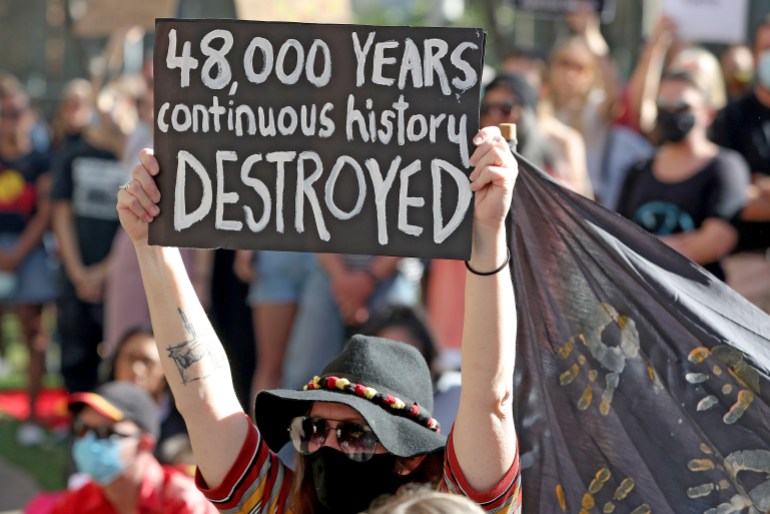Australian Indigenous group to rate mining firms on performance
After destruction of sacred site, Aboriginal group to assess firms on environmental, social, governance measures.

An Aboriginal group said on Wednesday it plans to publish a scorecard to rate mining companies in Western Australia’s iron ore heartland on how well they comply with various environmental, social and governance (ESG) metrics.
The Wintawari Guruma Aboriginal Corp (WGAC), which represents the Eastern Guruma area in the Pilbara region, said it hoped the move would help to educate investors and the broader public after the destruction of ancient rock shelters by Anglo-Australian mining giant Rio Tinto last year.
Keep reading
list of 4 itemsNative Americans try to block US move to give land to Rio Tinto
Race for EV batteries pits conservationists against green energy
Rio Tinto chairman quits over Aboriginal site damage in Australia
“It’s not easy for people to hear from the native title holders, so you tend to get just the mining company’s view of the world,” director Tony Bevan told the Reuters news agency.
The scorecard would also provide feedback in a way that could be acted on by miners.
“The intent is for it to be a positive and proactive process,” Bevan said.
The scorecard focuses on five areas: heritage surveys, regulatory compliance, caring for the environment, relationships with Native Title Holders and ESG reporting.
WGAC will assess miners’ performance for a year based on 34 questions, then publish the results and provide feedback.
Public outcry
The chairman of Rio Tinto announced earlier this month that he is stepping down after the company triggered a public outcry by destroying the ancient Aboriginal site in Western Australia to extract $135m worth of iron ore.

Rio blew up the 46,000-year-old rock shelters at Juukan Gorge last May, sparking a public backlash and investor revolt that led to the resignation of the company’s CEO and two top executives last September.
The caves were one of the earliest known locations inhabited by Australia’s Indigenous people and contained some of the oldest Aboriginal artefacts ever found in the country.
Rio Tinto chairman Simon Thompson said the destruction had “overshadowed” the company’s successes in 2020 – during which it paid a record dividend to investors thanks to booming iron ore prices.
Increasing transparency
More than 93 percent of Eastern Guruma country is covered by mining tenements, making it one of the most heavily explored regions in Australia, WGAC said. Rio Tinto and Fortescue Metals Group are the two biggest miners in the region.

Rio operates six mines and three rail lines in the region and Fortescue operates the large Solomon mine and a rail line. Both companies are seeking approvals for significant expansions of their operations, WGAC said.
Rio and Fortescue had no immediate comment.
Bevan said WGAC could help other Indigenous groups develop similar scorecards and was open to speak with the miners about the metrics and rating process.
“The more transparent we can be, in terms of our process, the better the outcome will be,” he said.